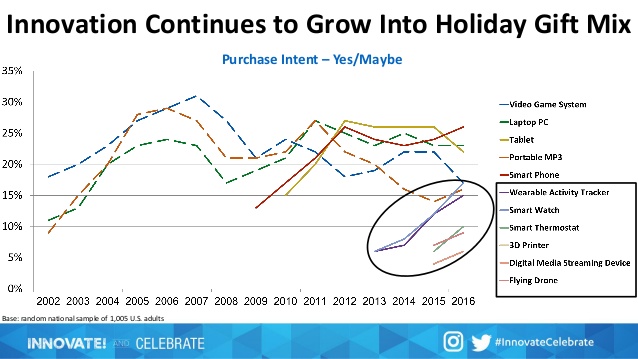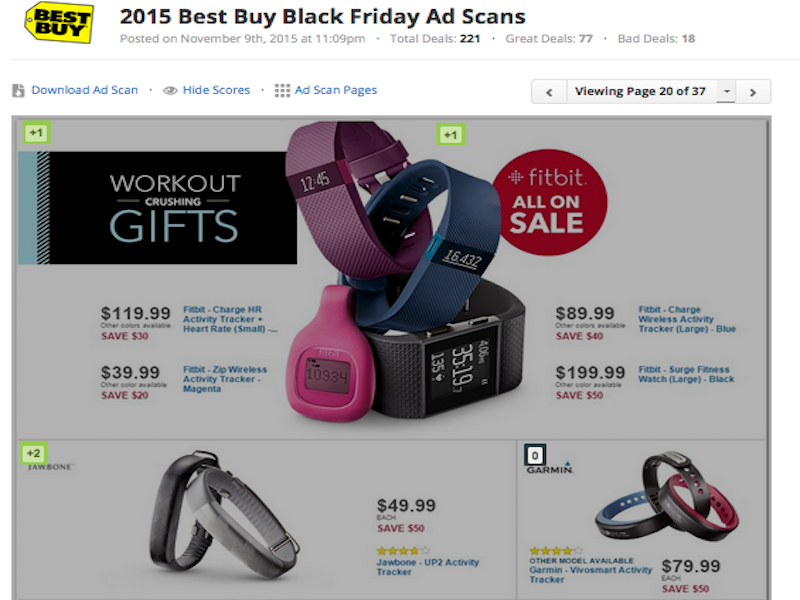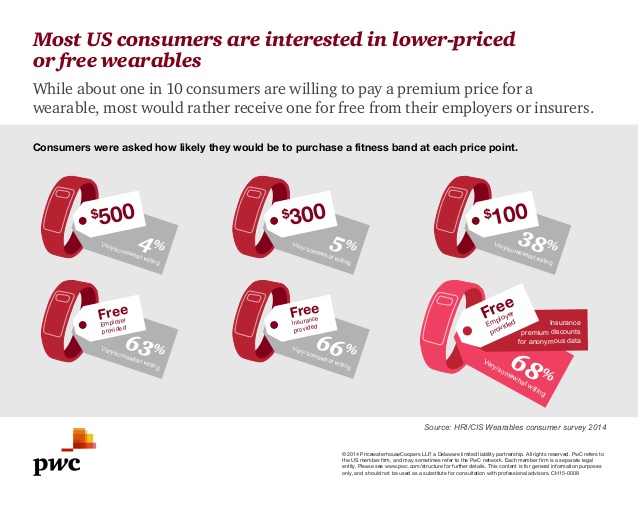
Technology is high on U.S. consumers’ holiday shopping lists for the 2016 holiday season, according to the CTA (Consumer Technology Association). And wearable activity trackers are a fast-growing segment of consumer technology purchases expected in shoppers’ carts (both physical and online virtual) this fourth quarter of 2016, CTA notes in its 23rd Annual Holiday Outlook consumer survey research.
The line graph illustrates the hot categories in this year’s holiday gift mix, led by smart phones (in red), tablets, laptops, and video game systems. But the proportion of people intending to purchase smartwatches now ties with video game system sales, closely followed by wearable activity tracker intentions-to-buy.
Some 27% of consumers expect to purchase some form of wearable tech, CTA expects, led by smartwatches (17%), activity trackers (15%), heart rates monitors/straps (9%), and GPS sport watches (6%). Beyond holiday shopping, one-third of people plan to purchase a smartwatch in the next year, 27% plan to buy a dedicated wearable device in the next year, and 21% plan to purchase a fitness GPS.
CTA forecasts that fitness tracker shipments in the U.S. will grow 25% from 2016 to 2017, to a total of 35.1 million unit shipments. For context, CTA expects 12.8 mm smartwatches to be shipped in the U.S. in 2017, about one-third of the volume of fitness trackers shipped.
 Health Populi’s Hot Points: Consumers in the U.S. will spend about $804 on holiday gifts for the 2016 gifting season, CTA projects. $241 of that (about 30%) will be for technology gifts.
Health Populi’s Hot Points: Consumers in the U.S. will spend about $804 on holiday gifts for the 2016 gifting season, CTA projects. $241 of that (about 30%) will be for technology gifts.
Expect every retailer that buys ad space for Black Friday 2016 to include fitness trackers and wearable devices in their “doorbuster” promotions, like those shown in Best Buy’s ad from the 2015 holiday shopping season. When Fitbits et. al. become loss leaders on Thanksgiving weekend, you know the category has hit mainstream consumer status.
Consumers who are buying wearables tend to look to them to support exercise and fitness, and nutrition and food tracking, based on PwC’s consumer research. But evidence was reported this month in The Lancet Diabetes & Endocrinology journal finding no evidence that step increases in the short term driven health impacts in the intermediate term. This year-long study was conducted among 800 workers in Singapore who were paid 10 Singapore dollars to participate in the program, using the Fitbit Zip tracker. The participants’ goal was to log between 50,000 and 70,000 steps a week to earn the incentive, doubling if people exceeded the goal. Incentives kept people in the program, but eventually people abandoned the devices because they did not learn any new information about themselves.
The study was conducted in 2013-14, and critics of the results note that vendors and employers using wearables in wellness programs have improved design and behavioral incentives, respectively, over the past two years based on early learnings.
 Fitbit has published its own research this month featuring the Dayton Regional Transit Authority’s work with Fitbit Group Health, yielding $2.3 million savings for the employer over two years as a result of the program. Fitbit’s program works with over 1,000 employers, including Barclays, Godaddy and Target, among them.
Fitbit has published its own research this month featuring the Dayton Regional Transit Authority’s work with Fitbit Group Health, yielding $2.3 million savings for the employer over two years as a result of the program. Fitbit’s program works with over 1,000 employers, including Barclays, Godaddy and Target, among them.
Notwithstanding the positive shopping forecast for wearable health trackers, U.S. consumers would much rather receive activity trackers for free or heavily subsidized by employers, according to PwC’s research into the wearables market.
Addendum 10-13-16 3pm EST – TIME magazine reports that the Apple Watch was found to be the most accurate activity tracker, based on clinical research published in JAMA Cardiology.




 Interviewed live on BNN Bloomberg (Canada) on the market for GLP-1 drugs for weight loss and their impact on both the health care system and consumer goods and services -- notably, food, nutrition, retail health, gyms, and other sectors.
Interviewed live on BNN Bloomberg (Canada) on the market for GLP-1 drugs for weight loss and their impact on both the health care system and consumer goods and services -- notably, food, nutrition, retail health, gyms, and other sectors. Thank you, Feedspot, for
Thank you, Feedspot, for  As you may know, I have been splitting work- and living-time between the U.S. and the E.U., most recently living in and working from Brussels. In the month of September 2024, I'll be splitting time between London and other parts of the U.K., and Italy where I'll be working with clients on consumer health, self-care and home care focused on food-as-medicine, digital health, business and scenario planning for the future...
As you may know, I have been splitting work- and living-time between the U.S. and the E.U., most recently living in and working from Brussels. In the month of September 2024, I'll be splitting time between London and other parts of the U.K., and Italy where I'll be working with clients on consumer health, self-care and home care focused on food-as-medicine, digital health, business and scenario planning for the future...